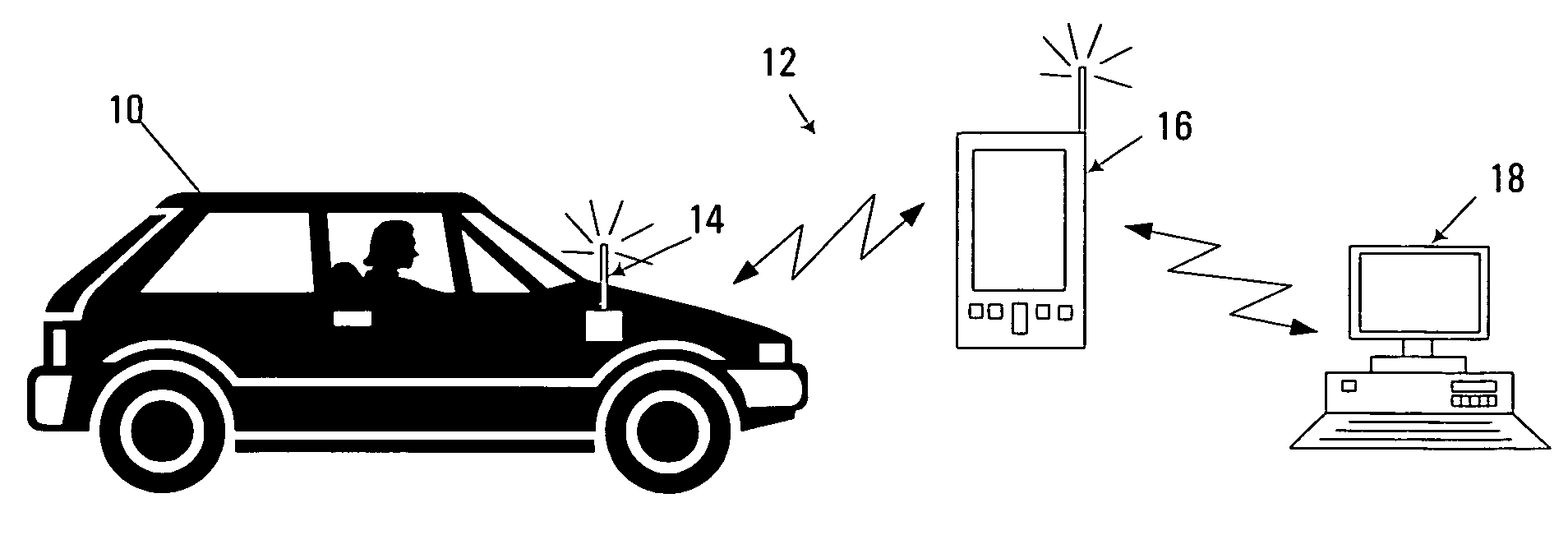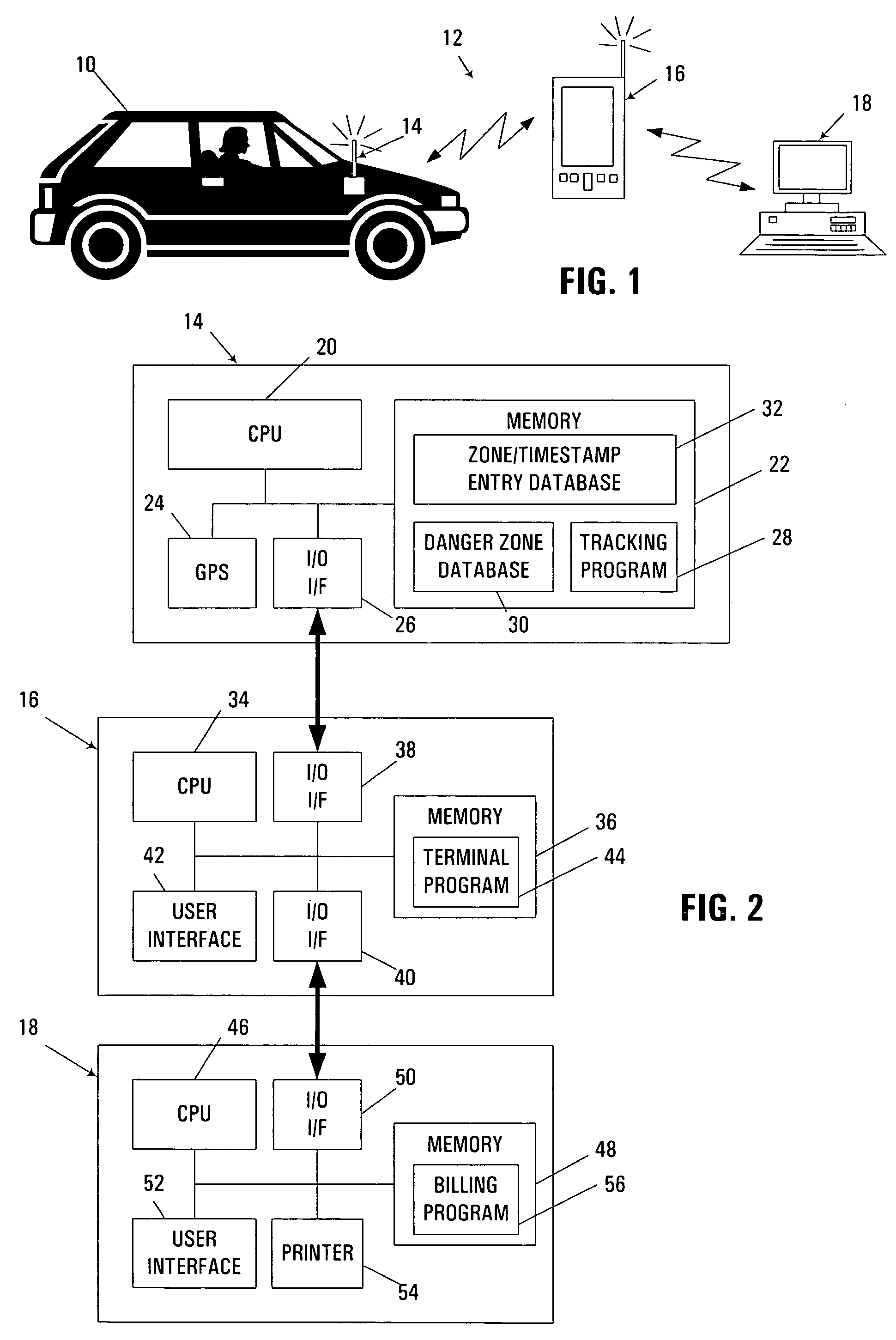Location-based vehicle risk assessment system
a risk assessment and location-based technology, applied in the direction of instruments, data processing applications, structural/machine measurement, etc., can solve the problems of increasing the cost of transportation, increasing the risk of accidents, and increasing the risk of people and property, so as to reduce the economic inefficiencies associated, reduce the risks associated, and reduce the cost
- Summary
- Abstract
- Description
- Claims
- Application Information
AI Technical Summary
Benefits of technology
Problems solved by technology
Method used
Image
Examples
Embodiment Construction
[0021]The illustrated embodiments generally operate by tracking the location of a vehicle for the purpose of conducting an economic transaction associated with the usage of the vehicle over a period of time. The economic transaction may be based upon any number of different activities associated with usage of a vehicle, including rental of a vehicle, insurance of a vehicle, etc. A vehicle may include practically any mobile form of transport including, for example, automobiles, trucks, airplanes, boats, bicycles, trailers, motorcycles, motor homes, etc. Moreover, systems consistent with the invention may also have additional utility in parental monitoring of minor operators.
[0022]Further, in the illustrated embodiments, the location of a vehicle is utilized to determine a particular region within which the vehicle is located. Varying levels of risk are associated with different regions such that location of a vehicle within a region of comparatively higher risk can be detected. The t...
PUM
 Login to View More
Login to View More Abstract
Description
Claims
Application Information
 Login to View More
Login to View More - R&D
- Intellectual Property
- Life Sciences
- Materials
- Tech Scout
- Unparalleled Data Quality
- Higher Quality Content
- 60% Fewer Hallucinations
Browse by: Latest US Patents, China's latest patents, Technical Efficacy Thesaurus, Application Domain, Technology Topic, Popular Technical Reports.
© 2025 PatSnap. All rights reserved.Legal|Privacy policy|Modern Slavery Act Transparency Statement|Sitemap|About US| Contact US: help@patsnap.com



